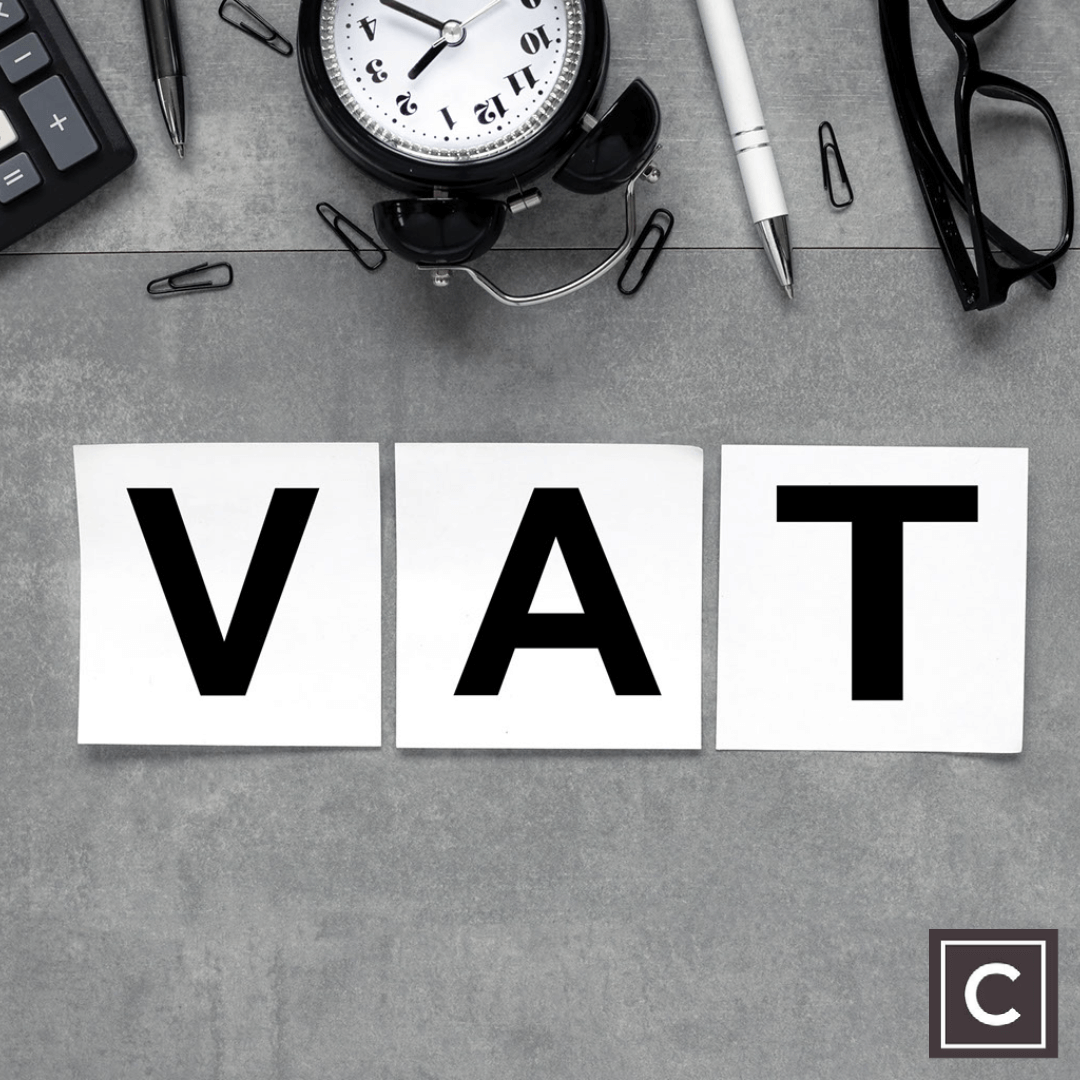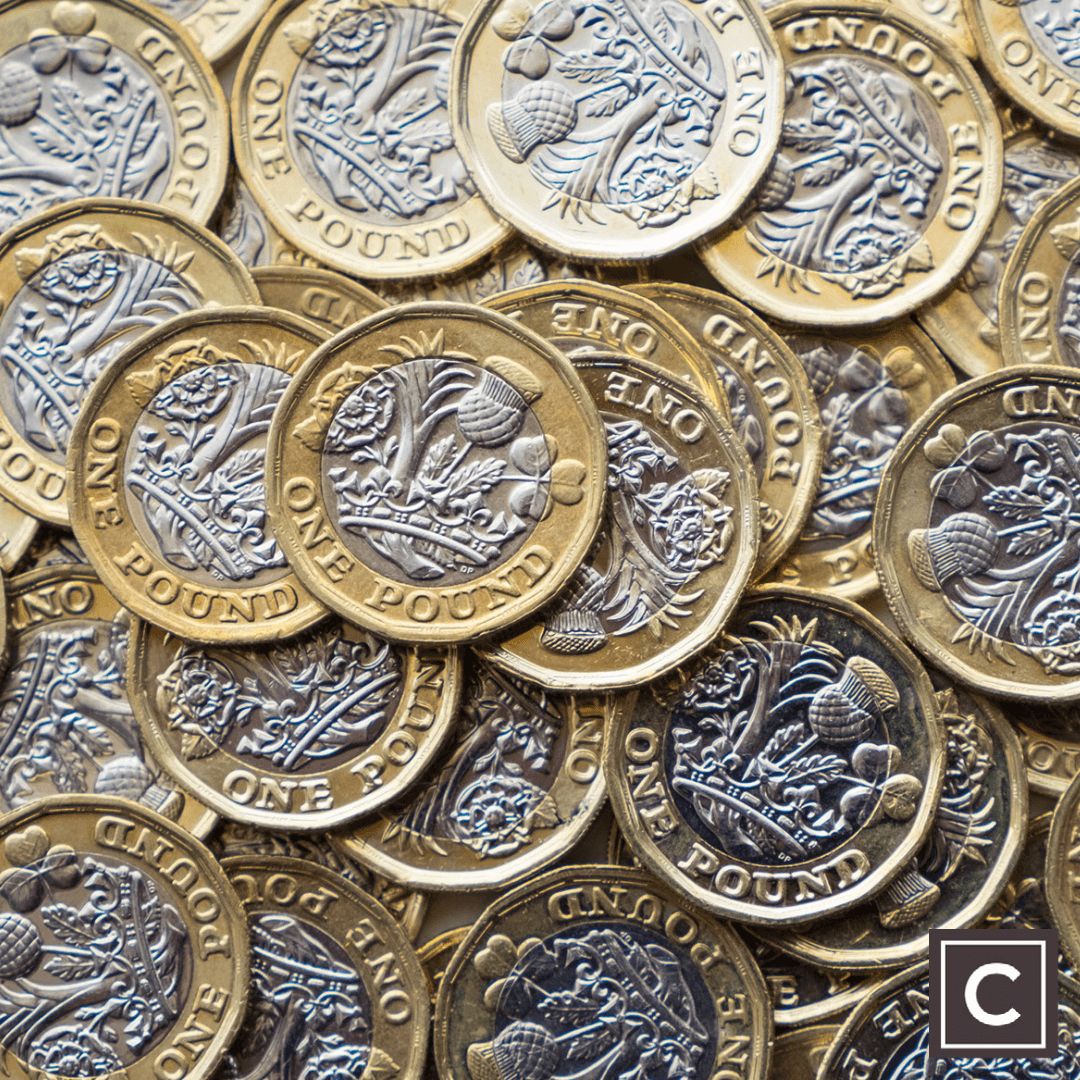A Simple Guide to Value-Added Tax (VAT) in the UK
Posted by Emily on 2nd Aug 2023 Reading Time:
Introduction to VAT: What Is It?
Value Added Tax, or VAT is a type of sales tax paid by consumers, not businesses. It represents the extra value added to a product between a supplier and the buyer. When consumers purchase a hot takeaway or orange squash, they pay an additional cost to the government.
Since its beginning in 1973, VAT has caused quite a stir, especially after being applied to hot food takeaways on 1 May 1984. Critics argue that VAT is a double tax because consumers pay for goods from already-taxed income.

VAT Percentage Over The Years
The standard rate of VAT has changed over time, with Governments choosing to raise or lower this tax depending on their priorities and the state of the economy.
The rates were:
| From | To | Standard Rate |
| 1 April 1973 | July 1974 | 10% |
| July 1974 | 17 June 1979 | 8% * |
| 18 June 1979 | 18 March 1991 | 15% |
| 19 March 1991 | 30 November 2008 | 17.5% |
| 1 December 2008 | 31 December 2009 | 15% |
| 1 January 2010 | 3 January 2011 | 17.5% |
| 4 January 2011 | 14 July 2020 | 20% |
| 15 July 2020 | 30 September 2021 | 5% ** |
| 1 October 2021 | 31 March 2022 | 12.5% ** |
| 01 April 2022 | Present | 20% |
* During this period an alternate VAT rate of 25% and then 12.5% was introduced for petrol and some luxury goods.[42] This was abolished in 1979.
** The government made an announcement on 8 July 2020 allowing VAT registered businesses to apply a temporary reduced rate of VAT to certain supplies relating to: hospitality hotel and holiday accommodation admissions to certain attractions.
The Reality of VAT
Think of businesses as VAT collectors for the government. They do this without getting paid for it, and sometimes it might even cost them money. But it's not all bad news. There's a bright side to this. Your business gets to keep the government's money for 5 to 17 weeks before passing it on. During that time, you can even earn some interest on that money. It's like having a little extra cash flow to help out, and every little bit can make a difference!
Currently, VAT on hot food is 20%. Discussions on changing this are loud, but the current political climate leaves little room for action.

The Evolution of VAT Rates: How Does the UK Compare?
The Beginning (10% Standard Rate): When the European Union (EU) was starting, a tax called Value-Added Tax (VAT) was introduced at a rate of 10%. Every country in the EU had the same rate, making things fair for everyone. France was the first to use this tax.
Changes Over Time: As time passed and the needs of different countries changed, the standard 10% rate began to increase. This wasn't just about raising the percentage but showed that the EU could adapt to other economic conditions and challenges.
Today's Complex System: Now, the VAT system in the EU is more complicated. Each country might have different VAT rates for various goods and services, reflecting their specific economic situations and goals. It shows how the EU has grown from a "one-size-fits-all" approach to a more flexible system that can cater to the individual needs of each country.
UK's Approach to Food: In the UK, most ingredients used to make food are not subject to VAT (zero-rated), unlike in other European countries. However, hot takeaway food in the UK does have VAT applied.
This journey of VAT reflects how tax systems can change and adapt over time, responding to the unique and evolving needs of countries and their citizens.
| Country | Standard VAT Rate | Reduced VAT Rate (Table Last Updated: 20/07/2023) |
| Austria | The standard VAT rate is 20% | Austria applies a 13% intermediate VAT rate to certain supplies, including domestic air travel, while a reduced VAT rate of 10% is applied to supplies such as rental of real estate. |
| Belgium | The standard VAT rate is 21% | Belgium enforces two reduced rates – the “First Reduced Rate” at 6% and the “Second Reduced Rate” at 12%. These rates apply to a restricted range of transactions. |
| Bulgaria | The standard VAT rate is 20% | As per Article 66a of the VAT Law, the reduced VAT rate in Bulgaria stands at 9%. |
| Croatia | The standard VAT rate is 25% | The Croatian VAT Act stipulates a first reduced rate of 13% and a second reduced rate of 5%. |
| Cyprus | The standard VAT rate is 19%. | The first reduced rate of 9% and second reduced rate of 5% are stated in Articles 18 and 18A of the VAT Law for certain goods and services. |
| Czech Republic | The standard VAT rate is 21%. | The Czech VAT Act’s Article 47 includes two reduced rates of Value Added Tax – the initial one being 15%, while the secondary one being 10%. |
| Denmark | The standard VAT rate is 25%. | |
| Estonia | The standard VAT rate is 20% | In accordance with Section 15 of the Estonian VAT Act, there are two reduced rates for Value Added Tax – the primary one being 9%, and the secondary one being 5%. |
| Finland | The standard VAT rate is 24% | There are two reduced rates for Value Added Tax in Finland; the first reduced rate stands at 14%, while the second reduced rate is 10%. |
| France | The standard VAT rate is 20%. | The General Tax Code’s Article 278-0 bis and subsequent provisions outline three different rates for Value Added Tax. An intermediate rate of 10%, a primary reduced rate of 5.5%, and a secondary reduced rate of 2.1% are included. |
| Germany | The standard VAT rate is 19% | As of January 1, 2021, the German VAT Act’s §12 designates a reduced rate of 7% for Value Added Tax in Germany. |
| Greece | The standard VAT rate is 24% | Annex III of the Greek VAT Code designates specific supplies of goods and services that are subject to reduced rates of Value Added Tax. Article 21 of the same code specifies that a reduced rate of 13% and a super-reduced rate of 6% apply to these supplies. |
| Hungary | The standard VAT rate is 27%. | Various supplies are subject to a reduced VAT rate of 5% and an intermediate VAT rate of 18%, as stipulated by Article 82 of the Hungarian VAT Act |
| Ireland | The standard VAT rate is 23%. | In Ireland, Section 46 of the VAT Act and Schedule 3 outline three reduced rates for Value Added Tax that apply to specified supplies. These include a primary reduced rate of 13.5%, a secondary reduced rate of 9%, and a tertiary reduced rate of 4.8%. |
| Italy | The standard VAT rate is 22% | Italy’s Value Added Tax system includes three reduced rates, which are referred to as the “first reduced rate,” “second reduced rate,” and “super-reduced rate.” Specifically, these rates stand at 10%, 5%, and 4%, respectively. |
| Latvia | The standard VAT rate is 21%. | According to Article 42 of the Latvian VAT Law, two different reduced rates of Value Added Tax are available, known as the “First Reduced Rate” and the “Second Reduced Rate.” These rates stand at 12% and 5%, respectively, but specific conditions and requirements apply. Essential supplies, such as registered medications and baby food, fall under the First Reduced Rate, while fresh produce, printed materials, and electronic literature and publications generally fall under the Second Reduced Rate. |
| Lithuania | The standard VAT rate is 21%. | The Lithuanian VAT Law’s Article 19 outlines two different reduced rates for Value Added Tax. The “First Reduced Rate,” which stands at 9%, applies to specific supplies, such as residential heating and print publications. Meanwhile, the “Second Reduced Rate,” which is 5%, applies to particular goods and services that are related to medicine and health. |
| Luxembourg | Starting from January 1, 2023, until December 31, 2023, the standard rate of Value Added Tax in Luxembourg will be 16%, as per Article 39 of the Luxembourg VAT Law. | Effective from January 1, 2023, until December 31, 2023, Article 39 of the Luxembourg VAT Law specifies that different rates of Value Added Tax will apply. The intermediate reduced rate of VAT is 13%, the reduced rate is 7%, and the super-reduced rate is 3%. |
| Malta | The standard VAT rate is 18%. | In accordance with the VAT regulations stated in the Maltese VAT Act’s Eighth Schedule, there exists two reduced VAT rates; the first at 7% and the second at 5%. |
| Monaco | The standard VAT rate is 20%. | The Tax Code’s Articles 52-0 to 59 dictate the application of varied VAT rates in Monaco, specifically an intermediate rate of 10%, a first reduced rate of 5.5%, and a second reduced rate of 2.1%. |
| Netherlands | The standard VAT rate is 21% | Article 9 of the Dutch VAT Act designates certain supplies that are eligible for a reduced VAT rate of 9%. |
| Poland | The standard VAT rate is 23%. | Goods and services falling under specific categories are subject to a first reduced rate of 8% and a second reduced rate of 5%. |
| Portugal | The standard VAT rate is 23% | As stated in Article 18 of the Portuguese VAT Code, a reduced VAT rate of 6% (5% in Madeira and 4% in the Azores) and an intermediate VAT rate of 13% (12% in Madeira and 9% in the Azores) are applicable. |
| Romania | The standard VAT rate is 19%. | The Romanian VAT Code’s Article 291 outlines a First Reduced rate of 9% and a Second Reduced rate of 5%. |
| Slovakia | The standard VAT rate is 20%. | Supplies such as basic food items and pharmaceutical products are eligible for a reduced VAT rate of 10% in accordance with Section 27, Annex 7, and Annex 7a of the Slovakian VAT Act. |
| Slovenia |
The standard VAT rate is 22%. |
In compliance with Article 41 of the Slovenian VAT Act, a first reduced rate of 9.5% and a second reduced rate of 5% are available. |
| Spain |
The standard VAT rate is 21% |
Under Article 91 of the Spanish VAT Act, a reduced VAT rate of 10% is granted to specific agricultural supplies, while a super-reduced rate of 4% applies to supplies such as books. |
| Sweden |
The standard VAT rate is 25%. |
Chapter 7, Section 1 of the Swedish VAT Act stipulates that a first reduced rate of 12% is applicable to supplies that include foodstuffs, while a second reduced rate of 6% is applicable to supplies that include books and other publications. |
| U.K |
The standard VAT rate is 20%. |
Article 29A and Schedule 7A of the VAT Act 1994 specify certain supplies that are eligible for a reduced VAT rate of 5%. |
Understanding the VAT Flat Rate Scheme
For small businesses, the VAT Flat Rate Scheme, introduced in 2002, is a simpler way to handle VAT. It's not a different rate but a way to streamline the process.
This scheme used to be profitable for businesses, but changes in 2017 cracked down on perceived exploitation. The introduction of a 12.5% higher flat rate also affected its appeal.
Eligibility and Leaving the Scheme
- Eligibility: Your business must be VAT-registered, expecting a VAT taxable turnover to be £150,000 or less in the next 12 months.
- Leaving the Scheme: If your turnover exceeds £230,000, or you expect it to, you must leave. If your turnover falls below £85,000, you may wish to cancel VAT registration.
Standard VAT vs Flat Rate Scheme
- Standard VAT Accounting Scheme: You pass on 20% tax from eligible sales to HMRC and reclaim VAT on purchases. Your VAT payment or claim differs between what you charge customers and what you pay on purchases.
- VAT Flat Rate Scheme: You pass a fixed rate to HMRC, keeping the difference between what you charge and pay. You can't reclaim VAT on purchases except for specific capital assets over £2,000.

Making Tax Digital
To modernise and simplify tax filing, the UK government introduced the Making Tax Digital (MTD) program. Businesses with a turnover over £85,000 must now digitally store records and use software for VAT returns.
VAT: The Quirks and Anomalies
VAT may sound straightforward, but the system has some rather peculiar rules that might surprise you. Here's a look at some of the intriguing and even humorous aspects of VAT:
- The Gingerbread Man's Eyes: If a gingerbread man has two chocolate spots for eyes, there's no VAT. Add any other chocolate decorations, and VAT applies.
- Horse Sales: The sale of a live horse is standard-rated for VAT. However, the sale of a dead one (for horse meat) is zero-rated.
- Luxury or Not? Items like orange squash, petrol, ice cream, and poodle food are considered "luxuries" and attract VAT. Conversely, caviar, lap dances, and labrador food do not.
- Bee Pollination: Hiring bumblebees for pollination is taxed under VAT, but honey bees are not.
- Shortbread Conundrum: Chocolate-covered shortbread is subject to VAT, but add a layer of caramel to make Millionaire's shortbread, and it's not.
- Juice Mix: Orange juice and lemon juice are zero-rated. Mix them, and you have a standard-rated product.
- Nuts About Tax: Most nuts sold in the shell are zero-rated, while those out of their shells attract VAT.
- Cakes, Crisps, and Beverages: Jaffa cakes are considered cakes, Pringles are crisps, and Lucozade Sport is a beverage, according to rulings, making the drink subject to VAT.
These quirky rules serve as fascinating examples of how complex and, at times, whimsical tax laws can be. It also shows that understanding VAT isn't just about percentages and legal terms; there's a lighter side to this essential part of the UK's economic structure that often raises eyebrows and sometimes even smiles!

VAT's Economic Impact
- Revenue has increased 80% since the rate went from 15%.
- VAT contributes 21% to the UK's tax take.
| Tax Name | Tax name % of HMRC tax take 2008/09 | % of HMRC tax take 2010/11 | % of HMRC tax take 2017/18 |
| VAT | 17.6% (VAT rate 15%) | 18.4% (VAT rate 17.5%) | 21% (VAT rate 20%) |
| Income Tax | 34.4% | 33.8% | 31% |
| National Insurance Contributions | 21.7% | 21.3% | 22% |
| Corporation Tax | 9.9% | 9.5% | 9% |
| Fuel Duties | 5.5% | 6% | 5% |
| Stamp Duty Land Tax | 1.1% | 1.3% | 2% |
| Capital Gains Tax | 1.8% | 0.8% | 1% |
| Other | 8% | 8.9% | 9% |

Tips for Managing VAT
1. Open a VAT Fund Account: Divide your weekly turnover by six and deposit this fraction into the account.
2. Exclude VAT from Turnover: It's not your money, so don't include it in your balance sheet.
3. Display VAT Information: Ensure menus and receipts clearly show VAT.
With the right approach and understanding, VAT can be a smooth process for businesses and consumers. Whether it's gingerbread men or government policies, a clear grasp of VAT can help you navigate this essential aspect of the UK economy and running of the business.

